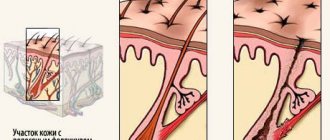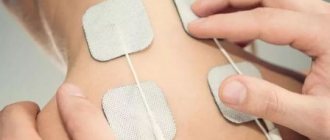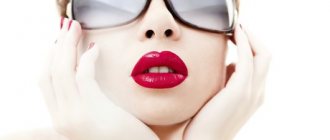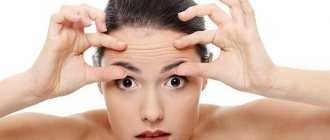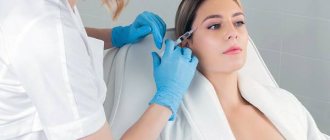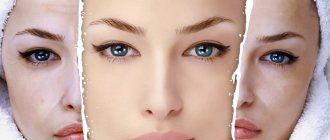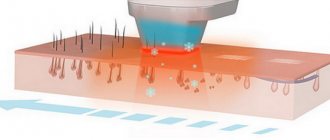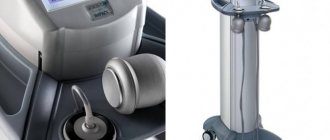Device for photorejuvenation M22 based on IPL
The M22 device produces IPL-type photorejuvenation and a number of other manipulations from the arsenal of photocosmetology.
This is a professional-grade multi-module platform that is used to treat aesthetic skin imperfections. The equipment is developed and manufactured by Lumenis, a large international manufacturer of cosmetology equipment. The advantage of the M22 model is its dual pulse system. Nd:Yag (neodymium laser) and IPL, which expands its functionality. High operating efficiency is ensured by a special beam configuration and cooling system, which increase the effectiveness of manipulations while ensuring a high level of patient safety.
Where to do facial photorejuvenation?
In aesthetic medicine, cosmetologists use light methods carefully, since if the skin type is incorrectly determined or the devices for the procedure are selected incorrectly, there is a high probability of developing complications. To avoid regretting your choice, contact only qualified doctors who have been specially trained and have gained relevant experience in photocosmetology
The Areado portal has collected the best cosmetology salons in Russia providing photorejuvenation services. To start selecting a salon in a suitable area or near a metro station, select one of the cities.
- Moscow;
- St. Petersburg;
- Novosibirsk;
- Yekaterinburg.
It is preferable if the cosmetologist is certified in the field of laser technology and has received a certificate from the manufacturer of the device with which he works. The light treatment device deserves special mention. The more modern the device used by the doctor, the higher the chances of a good effect for the patient.
Modern models are equipped with automatic high-precision diagnostics. This helps the cosmetologist select the appropriate intensity of the rays. Preset programs, replaceable filters and emitters allow the program to be adjusted for each patient. You can find out the name of the device by calling the clinic or looking at the website.
It is worth noting that the procedure will be more expensive when using professional equipment.
Hidden dangers of the procedure
The worst thing that can happen after photorejuvenation is a burn. This situation can arise under the following conditions:
- Lack of high-quality and modern equipment. Very often, salons save on new systems and buy old ones whose filters allow ultraviolet radiation to pass through. This can lead to cancer in the long term. The maximum safe operating period of the equipment is 8 years at a power of 30 J.
- If the procedure is carried out in institutions such as a hair salon, and not in beauty salons with certified medical workers.
Indications
The main indications for the procedure are described below.
Removal of freckles and age spots
Phototherapy does not lighten excess pigmentation, like other methods, but removes it. Light rays heat age spots and freckles without destroying surrounding tissue. After the procedure, they darken, and after a while this area begins to peel off. The new layer has a normal shade, which is no different from healthy epidermis. To completely disappear pigmentation, it is necessary to carry out from 3 to 10 procedures with a break of 2-3 weeks. The number of sessions is determined by the cosmetologist depending on the skin type, type and size of pigmentation.
The effect of the first procedure will be noticeable after 10 days.
Acne treatment
Acne occurs due to an inflammatory process in the sebaceous gland. During phototherapy, the damaged area is heated. Thanks to this, bacteria are destroyed, the synthesis of collagen and elastin is stimulated, and the skin is quickly restored. On average, the course of treatment is 5-10 sessions. Immediately after the procedure, the area of skin may become inflamed and swollen, which is a normal reaction. This condition will pass in a few hours.
After completing the course of treatment, the complexion becomes healthy, acne and spots from them disappear.
Removal of vascular formations
Under the influence of the beam, pathologically dilated capillaries close, while healthy ones remain intact. Elastin and collagen begin to be actively produced, which accelerates healing and tightens the skin. Depending on the size and type of damaged vessels, the number of procedures is determined (on average 5-8). After completion of treatment, it is recommended to perform 1-2 procedures per year to prevent the formation of new vascular disorders.
Other indications
Also, the photorejuvenation procedure will be effective for:
- the first wrinkles and other age-related changes that occur after 30 years;
- unhealthy (gray or yellow) complexion;
- dryness, tightness, peeling of the skin;
- excessive oily skin;
- enlarged pores.
How is the procedure performed?
The facial skin is first cleaned, and a protective light-conducting gel is applied to the treated areas to protect against overheating. A special device with a rounded glass tip (or without it in cases of non-contact exposure) treats the skin with light flashes. Painful areas are treated with anesthetic cream. The patient wears glasses to prevent corneal burns.
Immediately after the procedure, slight redness and swelling of the dermis will be present for some time. The treated areas are covered with a restorative cream.
The result of photorejuvenation will become noticeable 2-3 weeks after the procedure. A properly performed photorejuvenation procedure eliminates side effects. After the photorejuvenation procedure, visiting a bathhouse, sauna, or solarium is not recommended. During the recovery period, you should refrain from peeling, scrub and alcohol-containing cosmetics. Be sure to moisturize your skin and use sunscreen. Taking antioxidants and staying hydrated are recommended. But the difference between peeling and scrub and what is best to choose is indicated here.
The video shows how the photorejuvenation procedure goes:
Experts recommend photorejuvenation in the following cases:
- at the first age-related changes that appear no earlier than 30 years;
- for age spots and freckles;
- with excessive dryness of the skin, tight and flaky;
- for fine and deep wrinkles;
- with a capillary network and enlarged pores;
- for tired gray skin;
- for acne.
Contraindications and consequences
Like all cosmetic procedures, there are contraindications and consequences for photorejuvenation. The technique is not suitable for pregnant women and people under 16 years of age. The procedure is contraindicated for people with allergic skin reactions and cardiovascular disorders. The procedure is not recommended for people with photosensitivity. Increased sensitivity to light is caused by long-term use of antibacterial drugs and narcotic drugs. It is more advisable to carry out photorejuvenation not in the hot summer period, when sensitivity to ultraviolet rays is increased, but in the spring or autumn season.
Contraindications for facial photorejuvenation are as follows:
- the procedure is not performed if the patient has mental disorders and epilepsy;
- if a blood and thyroid disease is diagnosed;
- for diabetes and skin diseases;
- for cataracts and glaucoma;
- in acute inflammatory processes.
Before undergoing photorejuvenation, it is recommended to consult a dermatologist. 7-10 days before the procedure, you should stop taking antibacterial drugs, retinoids, aspirin, and ibuprofen. A month before photorejuvenation, it is recommended not to visit the solarium, limit exposure to the sun and not use self-tanning.
Positive aspects of photorejuvenation:
- Small wrinkles are smoothed out, deep wrinkles become less noticeable. At the same time, the integrity of the surface layers of the skin is not compromised.
- Photorejuvenation slows down the aging process of the dermis, renews epidermal cells and restores water balance.
- Stimulation of the production of elastin and collagen gives the epidermis elasticity and firmness.
- Facial skin acquires a healthy and natural color. Due to maximum hydration, tightness and flaking disappear.
- Photorejuvenation does not require a long recovery period and allows you to quickly return to your normal life.
- The procedure can be performed on any area of the skin and is suitable for all dermis types.
- The rejuvenation method is considered safe and does not leave obvious traces of impact.
- A full course of photorejuvenation solves several problems simultaneously.
- Photorejuvenation is available to people of any age and gender. But how Elos laser hair removal is carried out and how to carry out the procedure yourself is indicated in the link.
An interesting fact is that initially devices with intense pulsed light were intended for painless hair removal. And only in the process of mastering the method, beneficial effects on the epidermis were discovered, and the technology received a new round of development in the cosmetology market.
Cons of the procedure
- In some cases, there may be a negative effect of photorejuvenation in the form of peeling, redness and swelling. This is possible with sensitive skin, but unpleasant symptoms disappear quite quickly - within 5-7 days.
- Photorejuvenation is not a one-time procedure. To achieve maximum effect, 7 or more procedures are necessary. In addition, a correction session is required once a month.
- If the procedure is carried out in bad faith, a burn is possible, which can lead to unpleasant consequences.
- The most unpleasant complication may be photodermatosis caused by sunburn. This skin disease causes increased sensitivity of the skin to sunlight. Photodermatitis is manifested by redness and inflammation, an allergic rash. A phototoxic reaction may not appear immediately, but only after some time. Light-skinned people are more at risk.
- The photorejuvenation procedure does not solve the problem of sagging skin in the neck and lower jaw area. Does not eliminate deep wrinkles in the nasolabial area. To improve the condition of the skin in this area, phototherapy should be combined with mesotherapy or contouring. You can learn about male epilation of intimate areas in this article.
The video shows the disadvantages of photorejuvenation:
Based on the combination of positive and negative aspects, photorejuvenation can be considered the safest and most effective procedure for restoring the skin. Photorejuvenation is a relatively new method that is widely used these days. The main condition for achieving sustainable lifting is the correct choice of a clinic that has proven itself in this area, as well as following the recommendations of specialists, taking into account contraindications. We also recommend that you familiarize yourself with bikini waxing at home in this material.
Indications for photorejuvenation
Photorejuvenation is a modern, highly effective procedure for skin rejuvenation and treatment, which is based on the effect of intense pulsating light (Intensive Puls Light, IPL) on certain skin structures, depending on the selected light wavelength and radiation parameters. The targets of action in this case are melanin deposits in the skin, components of dilated blood vessels and defective collagen fibers. The light energy of IPL radiation causes the destruction of these structures without damaging the surrounding tissue.
The photorejuvenation procedure in our clinic is performed on one of the most powerful and effective devices today - the multi-module M22 platform (Lumenis), which is a newer, improved version of the famous IPL Quantum device, released by the same company about 12 years ago. Only procedures performed on high-quality, modern equipment can guarantee the safety of the procedure and excellent results!
- Skin withering, decreased tone;
- Age spots, freckles;
- Age-related hyperpigmentation;
- Vascular networks, telangiectasia;
- Enlarged pores;
In addition, by warming the dermis, the growth of the skin's own young collagen is stimulated, and microcirculation of blood and lymph improves. All this leads to skin tightening and improving its quality.
In order to accurately determine whether the photorejuvenation procedure is indicated for you, you need to make an appointment with a cosmetologist, who will not only assess the need for the procedure and select an individual treatment program, but also give additional recommendations that will make the treatment procedure as effective as possible and preserve the result for a long time.
The price of photorejuvenation depends on the area being treated and the desired result.
Devices for photorejuvenation
Modern IPL technology can produce 3 types of pulses, depending on the range:
- from 400 to 700 nm. Works with the surface layer of the epidermis. With the help of this range, couperose, freckles, superficial pigmentation are removed, and a healthy color is returned to the skin;
- from 700 to 900 nm. In this range they work with shallow wrinkles and age spots, narrow enlarged pores;
- in the range from 900 nm, which affects the deep layers of the epidermis, work with serious wrinkles. It activates biochemical processes at the cellular level.
Among the most popular and proven brands of photorejuvenation devices are the Israeli company SkinStationMistral, the English Mini IPL Spectron, Lumenis, a joint production of the USA, Israel and the UK.
What result will you get after the session?
During the procedure, the cosmetologist moves a special device over the skin, which emits powerful flashes of light. They penetrate to a depth of 3 cm, gently warm the tissues and work at the cellular level. Such targeted impulses help the skin rebuild itself and improve its condition - photorejuvenation works with several problems at once.
What changes will you notice after the course:
- Natural skin rejuvenation. The procedure accelerates living natural processes, so the skin becomes healthier and truly younger. After a course of photorejuvenation, cells begin to intensively produce their own collagen and elastin. Due to this, the oval of the face is tightened, wrinkles and scars are reduced, and pores are narrowed.
- Even complexion – pigment spots lighten or disappear. Powerful flashes destroy excess melanin pigment, and after 5-7 days the skin color becomes healthy and even.
- Spider veins and rosacea go away. Light radiation also acts on capillaries, contracting them. The reddish mesh on the cheeks and wings of the nose becomes less noticeable, and this visually makes you look several years younger.
- The skin becomes healthier and closer to normal. The procedure has pleasant “side effects”: under the influence of light, inflammation and herpes on the skin heal faster, and acne goes away. You will be less bothered by oily shine or, conversely, skin tightness.
The essence and effect of photorejuvenation
The photorejuvenation procedure involves selecting special frequencies of radiation so that it is well absorbed by melanin (this is necessary to destroy pigmentation), also hemoglobin (this is important for working with redness and blood vessels), and cells of the deep layers of the skin (this stimulates metabolic processes and the production collagen). The required formation is instantly heated, provoking protein coagulation, while adjacent tissues are practically not damaged. As a result of this, metabolic processes in the skin tissues are accelerated, the appearance of the skin becomes healthier, it looks more elastic, toned, and the pores are tightened.
Photorejuvenation is one of the most physiological ways to treat unwanted skin defects; in essence, it is simply stimulation of natural processes. Moreover, during such procedures, the outer layers of the skin are not damaged and numerous nerve endings are not blocked.
This technique can be applied to all areas of the skin, without exception, but most often it is used on exposed parts of the body (for example, arms, neck, face). This is because most skin defects treated with photorejuvenation arise due to regular exposure to ultraviolet radiation or other weather factors that negatively affect exposed skin (for example, snow, rain, wind). Another advantage of this method is that one procedure allows you to get rid of a number of problems. For example, in one session you can get rid of a tattoo and eliminate dilated blood vessels in the same area.
A comprehensive photorejuvenation procedure is recommended for use after 30 years, but the determining factor is the client’s desire. There are no objective contraindications regarding age; this procedure is applicable even to children’s skin; if necessary, freckles, age spots or other skin defects can be removed.
Possible complications
Laser lifting is a relatively gentle method of rejuvenation. However, there remains a possibility of complications and unpleasant consequences. Side effects occur in 3-5% of cases. These include the following negative points:
- skin redness;
- severe itching;
- severe swelling;
- formation of weeping crusts;
- preservation of “holes” from the fractional laser;
- hypo- or hyperpigmentation;
- the appearance of scars;
- bruises;
- skin inflammation.
Most symptoms resolve within the first week of rehabilitation. If the sensations become excessively painful, the itching does not go away, new wound lesions appear, you should immediately seek help from a specialist.
Phototherapy process in the salon
All stages of the light treatment procedure are its inseparable components. There is a high probability that the absence of one of them will lead to irreparable consequences. Let's look at the points:
- The doctor conducts a consultation, where during the examination he determines the color type of appearance, sensitivity to light, examines the lesion and sets the duration of treatment;
- Be sure to clarify the presence of certain health problems, if any, since the use of this method may be unacceptable (read below for contraindications);
- It treats the skin, thereby eliminating all possible contaminants; – applies a cooling and analgesic gel. Safety glasses must also be provided to protect against eye burns;
- The device acts on the skin, which can cause the patient a pleasant warmth and slight tingling sensation;
- The procedure approximately takes about half an hour. In conclusion, the cosmetologist applies a composition that soothes the skin and determines the time of the next visit and, if necessary, gives advice on home care.
As a rule, after the session, the doctor prohibits sunbathing and recommends constantly protecting the skin from the sun. You should also not visit the bathhouse or sauna for several days. During phototherapy, the skin becomes stressed, melanin is destroyed, and the skin is renewed. Therefore, elevated temperatures in the first days after the procedure can contribute to the formation of new age spots. Sometimes reactions such as peeling, redness, burning, and in some cases swelling may occur after the procedure, but all these abnormalities quickly pass.
How photorejuvenation occurs - what to combine with
The facial photorejuvenation procedure occurs in several stages. The preparatory stage is cleaning the patient’s face and applying a layer of light-conducting cooling gel. After this, the cosmetologist, starting the procedure, protects the woman’s eyes with special glasses with powerful light filters. The duration of the manipulations ranges from 15 to 60 minutes.
The affected area is treated with photo flashes, according to the selected mode. One procedure involves two simultaneous effects that affect the superficial layers of the skin, warming up the deep inner layers. Flashlights are virtually painless.
Some unpleasant sensations are felt in the area of the nasolabial triangle.
The session ends with the application of an anti-inflammatory agent, after which the cosmetologist gives recommendations for the rehabilitation period. These include:
- do not sunbathe for a week, use sunscreen;
- refuse to visit a bathhouse, sauna, or perform procedures related to heating the skin (thermal masks, inhalations);
- Do not use foundation, powder, or aggressive cleansers with acids and alcohol for several days;
- refrain from alcohol, smoking, strong physical activity, drink more water - to maintain the water balance of facial tissues.
Photorejuvenation can be performed annually. The procedure is combined with techniques such as peeling, mesotherapy, Botox or Dysport injections, and contouring. It is only necessary to maintain a sufficient time interval.
Cosmetologists advise to first carry out light therapy, and after six months begin contouring. Mesotherapy or peeling will force you to postpone photorejuvenation for 2-3 weeks. Botulinum toxin injections should be carried out 2 weeks after photo treatment; combining these two procedures on the same area is strictly prohibited.
The number of sessions ranges from 3 to 7 with a break of up to 3 weeks. The duration of the course depends on the skin type, its condition, and the patient’s age. Less powerful home devices may delay the onset of the effect, so more sessions will be required. However, professional equipment, which includes the IPL-based M22 model, makes it possible to correct deficiencies in a limited number of sessions.
How does the procedure work?
The details of the procedure depend on the type of photorejuvenation and the area of the body that will be corrected. Most often they work on the face:
- Before the procedure, you do not use any medicinal creams or serums for several days; you can only moisturize the epidermis with baby cream. On the day of the procedure, do not wear makeup.
- In the salon you lie down on a couch. The master cleanses the skin of the face. Wears protective glasses and covers moles.
- A special cooling gel guide will be applied to your skin and the process will begin.
- It consists of flashes that you will hear and feel. The procedure is not painful, but some discomfort is present.
- Upon completion, the protective gel is removed and a moisturizing gel is applied.
The procedure can be very painful for those with a low pain threshold.
The video describes and demonstrates the photorejuvenation procedure in detail:
ELOS – rejuvenation
ELOS, which is partly photorejuvenation, can also be considered an innovation among anti-aging technologies.
ELOS - rejuvenation is new because the energy of RF radio waves is added to the action of IPR - light quanta. Thanks to this powerful complex, the effectiveness of the procedure greatly increases.
The technology is intended, like photorejuvenation, to eliminate unwanted symptoms of skin aging.
So far this is the most effective method of dealing with time, at the same time painless and quite pleasant.
It also has a healing and life-giving effect, accelerating the healing of scars and wounds, and combats acne and oily skin.
The consequences of the ELOS procedure are similar to photorejuvenation:
- tightening and increasing the tone of the epidermis;
- elimination of wrinkles;
- restoration of healthy color and normalization of sebum secretion of the skin; reduction of pigmentation, capillary “stars”;
- activation of metabolism, etc.
The differences between ELOS and photorejuvenation are only in the power of impact: the first technique has a faster result due to its bidirectional effect. These procedures are good for eliminating facial wrinkles.
Drugs used
Photoporation is performed using special masks containing nutrients and having different biological effects:
- WrinckleCare to eliminate expression lines, contains hyaluronic acid, antioxidants and substances that act on the muscles; has a “Botox effect”, which is achieved without the use of injections;
- HydroCare for maximum skin hydration, improving complexion, giving softness and smoothness, eliminating dryness, tightness, flaking;
- LiftCare for tissue tightening, including on the cheeks, forehead, cheekbones, eliminating skin folds and wrinkles, skin rejuvenation;
- LightCare for whitening and prevention of hyperpigmentation, inhibition of active melanin production, restoration of a beautiful complexion;
- BlueCare to normalize the functioning of the sebaceous glands, eliminate excess oily skin, and fight acne.
These drugs are safe and cause virtually no side effects. In extremely rare cases, they can cause an allergic reaction or skin irritation.
Side effects and recovery period
If you decide to undergo photorejuvenation, the pros and cons of the procedure should also be carefully weighed. First of all, you need to take into account that after the session there may be side effects. The most common effects include significant redness, soreness, swelling, and then dryness of the skin. If safety precautions are violated during the procedure, skin burns are also possible.
In order to minimize potential risks, it is recommended to choose a specialist as carefully as possible, paying attention not only to his experience, but also to the devices that are in his charge
In addition, it is extremely important to follow the recommendations for the recovery period. In most cases, they are:
In most cases, they are:
- applying panthenol to the skin 2 times a day;
- using special nourishing cosmetics;
- conducting repeated sessions with a break of at least one week;
- limiting exposure to high temperatures (hot water) and direct sunlight;
- minimizing the use of decorative cosmetics.
Contraindications
Unfortunately, the photorejuvenation procedure is not suitable in all cases. This procedure should never be applied to the skin of people who have a cardiac pacemaker, suffer from diabetes or epilepsy, have cancer, poor blood clotting or varicose veins in the area of the intended treatment. It is also not recommended for people with increased photosensitivity, so-called “light allergy” and certain thyroid diseases.
Temporary contraindications to the photorejuvenation procedure are wounds and various scratches, a fresh tan, and treatment with certain medications (antibiotics, diuretics, antidepressants).
Answers on questions
How many procedures are needed to achieve a visible lifting effect?
The result will be noticeable after the first manipulation, when the skin is restored. However, to achieve a lasting and maximum result, another 2-3 sessions are needed, carried out at intervals of 1-1.5 months.
Can laser lifting replace plastic surgery?
This method allows you to achieve an effect similar to a surgical lift, but still it will not be as long-lasting and of high quality. If there are significant signs of aging, it is better to seek the help of a plastic surgeon.
How much does laser lifting procedure cost?
The exact price depends on the number of treated areas and the chosen method, the rating of the clinic and the skill level of the specialist. On average, a face and neck lift requires about 50 thousand rubles.
Is it possible to carry out the procedure at home?
There are devices on sale for home use, but their efficiency is significantly lower than professional equipment. In addition, without medical supervision it is difficult to achieve a high-quality result; there is a high risk of complications.
Prices for facial photorejuvenation service
The cost of facial photorejuvenation services depends on several factors. These include the following: the severity of the problems, what the patient needs to correct, the quality of the equipment used, the number of procedures performed. On average, a specialist needs to pay from 2,700 to 15 thousand rubles. It is relatively inexpensive considering the effectiveness of the intervention. However, the amount that a client engaged in rejuvenation will have to pay may increase, since in order to maintain a healthy appearance of the skin, it will have to be exposed to it systematically. You can avoid this need by doing the following:
- stop smoking and drinking alcohol;
- increase the amount of liquid in the diet;
- do not visit the sauna for two weeks after preventive procedures;
- Limit your stay outside in sunny weather or use special creams.
The cost of phototherapy, as well as the effectiveness of treatment, depends on the parameters of the device used . Different models of medical equipment differ in effectiveness and level of comfort during use.
The type and functionality of the equipment largely depends on the number of clients of the beauty salon. This parameter determines the profitability of purchasing one of the following devices for facial photorejuvenation :
- Palomar , popular among experienced cosmetologists. The device is multifunctional thanks to the use of ICON, StarLux 500 and other modules.
- Made in the USA Quantum . The device copes well with pigmentation. Its effect leads to normalization of the sebaceous glands.
- Equipment from the Italian company DEKA . It is optimal in terms of cost and functionality for a small beauty salon.
What is photorejuvenation
The essence of this service is to combat age-related changes in appearance. Most often, photorejuvenation is used for the face - cheeks, forehead, chin, nasolabial triangle.
Laser photorejuvenation of the face promotes cell renewal and stimulation of collagen synthesis, due to which, as numerous reviews indicate, the skin becomes perfectly even, elastic, smooth, and fine wrinkles disappear.
For the procedure, the innovative M22 device is most often used, which produces pulsed light, which, acting on the face, removes dead cells of the upper layer of the dermis. The luminous flux does not contain the UV spectrum.
Facial photorejuvenation can be divided into four types:
- Elos. The technique combines electrical and photorejuvenation. Many cosmetologists believe that there is no alternative to Elos.
- Laser. The light source is a neodymium laser.
- Collagen. Collagen lamps are used to stimulate collagen synthesis.
- IPL devices for photorejuvenation. The use of powerful light pulses that affect the skin with frequent flashes of rays of a certain intensity.
A woman who decides to undergo photorejuvenation needs to consult with a cosmetologist who will advise which type of procedure is right for her. It should be noted that the price of the procedure also depends on the technique.
Description of the procedure.
The procedure must be preceded by a preparatory stage, otherwise the effect will be reduced or not achieved at all. So, a month before photorejuvenation, it is not recommended to visit the beach, solarium, or use self-tanning products. The doctor is obliged to find out whether there are contraindications.
Carrying out the procedure:
- The patient lies down on the couch.
- A special gel is applied to the treated areas of the skin, which has a cooling effect.
- The patient and the cosmetologist put on dark glasses. The flash is visible even through dark glasses, which creates some discomfort. With Elos rejuvenation there is no negative effect on the eyes.
- The cosmetologist begins to make laser flashes.
- At the end of the procedure (duration about an hour), the dermis is treated with panthenol.
Patients are often afraid that photorejuvenation may cause pain. Reviews from girls who have tried this procedure indicate some unpleasant sensations - tingling and burning, which are most often concentrated in the area of the lips and wings of the nose. Redness may be observed, which disappears within an hour and a half.
Undoubted advantages of photorejuvenation:
- when eliminating defects, the surface of the skin is not damaged;
- procedures have a cumulative effect.
What is the procedure
What is photorejuvenation? The name itself indicates that we are talking about the effect on the skin, something similar to the mechanism of a camera. Indeed, a traditional photorejuvenation machine produces intense pulsed light, or IPL. The intervals between flashes are set in advance by the master; he also regulates the wavelength, which depends on the problem being corrected.
Photorejuvenation was first used in the early 90s of the last century in the USA. Russian beauty salons acquired innovative devices in a few years.
During the photorejuvenation procedure, light energy is converted into heat energy. Flares have a beneficial effect on the skin. They penetrate the epidermis to a thickness of up to 9 mm and heal it, namely:
- activate metabolic processes;
- stimulate collagen production;
- saturate the epidermis with oxygen;
- kill bacteria and remove toxins.
The main effect of IPL is that light is absorbed by pigment spots - dark cells saturated with melanin. The pigment is destroyed, the spots lighten. Therefore, the name “photorejuvenation” does not reflect the main essence of the procedure. First of all, it brightens the skin. Getting rid of wrinkles occurs due to the overall restorative effect of outbreaks on the epidermis.
The epidermis on all parts of the body lends itself to this type of rejuvenation and healing. They work with areas that have suffered from pigmentation and wrinkles, for example, the décolleté, neck, hands, shoulders, upper back. Most often, women come to the photorejuvenation procedure to get rid of defects and signs of aging on their facial skin. The environment, cosmetics, stress, diseases of internal organs and age have a detrimental effect on the delicate skin of the face, it becomes rougher, unevenness, wrinkles, pigmentation appear, and the color becomes dull. Photorejuvenation, due to its minimal trauma and short recovery period, is very popular among mature ladies and women suffering from various skin defects. Now “photorejuvenation” means different types of healing of the epidermis using exposure to rays.
How the procedure is carried out in the salon
First of all, you should initially go for a consultation to find out what types of laser rejuvenation are done in a particular salon, talk to the specialist, make sure of his professionalism - see with your own eyes the diplomas, certificates, and the place where everything will happen. And also prepare yourself mentally. It is not recommended to do the procedure right away - it is better to prepare yourself first, and talking with a doctor is one way to achieve this.
Moreover, before facial rejuvenation with a laser in Moscow or other cities, it is not recommended to sunbathe for 4 weeks, do peelings, cleansing or other, even rejuvenating, procedures in a salon. A couple of days in advance, you should stop using decorative cosmetics, and a day before, do not apply cream. You need to come to the clinic with a clean face, but you don’t need to do any special cleansing - regular washing is enough.
A scrub or peeling will be done for you in the salon yourself, after which anesthesia will be applied in the form of a gel. The master selects the depth of the laser and its temperature depending on the client’s skin type and his problems. And then, in fact, everything happens - the longer the rays and the larger the surface of influence, the more painful it will be. Next, the skin areas are treated with a specialized lotion, again they will give instructions and talk about care.
You should not go to work after the procedure; it is better to rest at home. If an area of the cheeks, nose or chin has been treated, it is advisable to wear a medical mask when going outside.
The rejuvenation procedure is shown in detail in this video:
Who needs to undergo photorejuvenation procedure?
Not only women, but also men do this. Even representatives of the stronger half of humanity strive to improve their appearance, which helps with facial photorejuvenation. Contraindications and consequences will be described a little lower, but first about who may need such a procedure.
So, not only women who have noticeable signs of skin aging, but also young girls with other problems can visit a cosmetologist for photorejuvenation:
- dark spots;
- defects in the upper layer of the dermis;
- minor aesthetic flaws, for example, freckles, which not everyone likes;
- rosacea, acne;
- enlarged pores;
- rosacea and spider veins.
In general, the photorejuvenation procedure will help restore skin tone, renew cells, making them work, whiten the dermis, removing any cosmetic imperfections. The technique will also help ladies make their skin more elastic. This will restore attractiveness to the face, especially if some time ago the woman lost a lot of weight and that is why the skin may not be in its best shape.
How is photorejuvenation performed?
Preparing for the session
Before carrying out the procedure itself, you should carefully prepare for it. Not only the result, but also the prevention of complications depends on how conscientiously the client treats the preparation. So, before the session you should follow the following recommendations:
- it is necessary to consult a specialist about the possibility of using photorejuvenation in a particular area;
- 3-4 weeks before the procedure, you must stop tanning (both solar and artificial);
- 3-4 days before the session you should not visit the sauna, bathhouse or swimming pool.
Important! The photorejuvenation procedure cannot be done in the summer during periods of increased solar activity!
Progress of the procedure
- The skin must be cleansed of dirt and decorative cosmetics.
- The client should wear protective glasses over his eyes.
- A cooling gel is applied evenly to the treated areas.
- If the procedure is performed for the first time, then it is necessary to do 2-3 test flashes to determine how the skin reacts to the impulses. If the reaction is normal, you can begin to fully treat the problem areas. A slight burning and tingling sensation is considered normal.
- Using a special device, a specialist must go over the entire surface. Each area is allowed to be affected only once. One session can last 15–60 minutes. The larger the skin area being treated, the longer the procedure lasts.
- After the end of the light beam, you must remove the remaining gel and glasses.
- A soothing agent (for example, Bepanten cream) is applied to the areas where the high-pulse light “worked.”
The first changes can be noticeable after the first procedure - the skin becomes softer, the tone is evened out. However, the expected result will not appear immediately. To do this, you should complete a course of 4–6 sessions, the interval between which is 1 month.
With each subsequent session, the power of the light pulse can be increased to affect deeper layers of the skin and thereby increase the effectiveness of the method.
You need to know that when pigment spots and freckles are removed after the procedure, they become much darker and become much more noticeable. However, already on the third day, pigment manifestations begin to fade and after 5–7 days they are practically invisible.
Skin care after the procedure
- For the first 2 days after photorejuvenation, it is better not to use aggressive cosmetics (especially foundation and powder). It is necessary to refrain from using lotions containing alcohol.
- For 3–5 days, morning and evening, it is recommended to apply a healing and soothing cream to the skin (Bepanten, D-panthenol, Dexpanthenol, etc.).
- In the first 2 weeks after the session, you should not sunbathe in the sun or in a solarium and overheat the skin (in a bathhouse, sauna). You should also not swim in a pool whose water is treated with chlorine compounds.
- For two weeks, before going outside, you must apply sunscreen with an SPF of at least 50 units.
- It is recommended to refrain from drinking alcohol. It destroys cell membranes, and this dries out the skin, which experienced quite significant stress during the session. Therefore, it is better to take a pause of 5–6 days. This also applies to smoking.
- It is necessary to observe the drinking regime - drink 1.5–2 liters of clean water per day.
How many facial photorejuvenation procedures need to be done?
Unfortunately, it is the face that is exposed to all the adverse factors, and it is almost impossible to protect it from wind, frost or high temperatures. As a result, from excess ultraviolet radiation, unsightly pigment spots or other formations, redness of the skin, and capillary mesh appear on the wings of the nose.
Young people do not want to see any signs of acne or even cute freckles on their faces. Increased oiliness of the skin in the summer is typical for all ages. In winter, the skin of the face suffers from excessive dryness and flaking. All these factors inevitably affect the condition of the skin as a whole, its elasticity is lost, and wrinkles appear. Photorejuvenation successfully copes with all signs of facial photoaging and other imperfections.
In order to get rid of individual age spots or spider veins, 1-2 procedures are enough. The effect of the procedure is long-term; in the future, a separate vessel may appear, which is eliminated literally in one flash.
Average cost of one flash
for removal of blood vessels or pigmentation ranges from 100 to 300 rubles.
For facial photorejuvenation procedures to eliminate the causes of acne, an average of 3-4 procedures are performed.
To achieve the full effect of rejuvenation, 3 to 6 procedures are prescribed, after which the age recedes by 10 years. The intervals between sessions should be 3-4 weeks, i.e. The full course will take about six months. If you consider that the first changes are noticeable just two weeks after the 1st procedure, and the effect of photorejuvenation is cumulative, then you can’t avoid compliments about your appearance for a whole year.
Price range for one facial photorejuvenation procedure
significant - from 5,000 to 10,000 rubles, in prestigious metropolitan clinics even higher. In some centers, the price list provides for separate procedures on the cheeks, forehead, nose, chin, etc., which are cheaper, but in any case, the cost of phototherapy for the entire face is more profitable than the total for each area.
How is laser facelift performed?
A facelift using a laser depends on the client’s goals and wishes, on the chosen rejuvenation technique, and on the equipment used in the clinic.
Laser equipment
For laser facelift, non-ablative rejuvenation devices are used.
Laser radiation penetrates to different depths and has a specific effect, depending on the wavelength. Various laser devices solve their problems of facial skin rejuvenation.
The main task for an ablative laser is water, which evaporates from tissues during the procedure.
Laser peeling is a painful procedure that requires longer rehabilitation. But this is also the best face lift. Specialists choose fractional lasers for this procedure.
Review of the photo pigmentation removal procedure
To remove very “old” pigment spots that took up almost half of my face, I decided to use photo pigmentation removal.
I contacted a good clinic that has been practicing for more than 15 years.
Photoremoval of pigmentation on my face was carried out using a device based on the IPL system. IPL (Intensive Pulsed Light) is a high energy pulsed light system. IPL systems produce a flash of light over a wide range of wavelengths.
At that time, 1 photo removal procedure cost me $100, now the price on the website is about $50.
Due to the large area of pigmentation on my face, the cosmetologist advised me to have photorejuvenation of the entire face.
Before photo removal, the face was treated with gel and protective glasses were put on the eyes.
The first procedure, as the cosmetologist explained to me, was carried out at low power in order to find out the reaction of my skin to the effects of light waves. The photo removal seemed quite tolerable to me; the skin tingled slightly.
After the procedure, the face turned a little red, but the age spots did not react in any way - they did not become brighter, as promised, and certainly did not lighten.
The next photo removal was carried out a month later.
This time the impact of the light pulse was increased. It hurt, especially in the forehead area. The face turned a little red again. The pigment spots did not become brighter, did not lighten, and the skin did not peel off.
The third photo deletion also occurred a month later.
The cosmetologist again increased the light pulse. It hurt not only in the forehead area, but also over the entire surface of the skin of the face. The face, oddly enough, hardly blushed.
And the pigment spots again did not respond to the procedure! My spots did not become brighter, darker, or lighter. There was no peeling of the skin.
I didn’t go for the fourth procedure. I felt sorry for spending $300 to no avail.
SUMMARY
The advertised photo removal of pigmentation did not help me get rid of pigmentation .
For what reason the light pulse did not help me, I don’t know. There are a lot of positive reviews on the Internet about how photo removal helped get rid of pigmentation - where is the truth, where is the lie, where is the advertising?!
Probably photo removal is effective when pigmentation is not as advanced as I had.
In my case, peeling with the most ordinary badyagi turned out to be effective. Read my review here!

